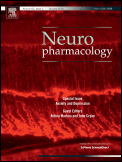
“Neuroimmune networks and the brain endocannabinoid system contribute to the maintenance of neurogenesis.
Activation of cannabinoid receptors suppresses chronic inflammatory responses through the attenuation of pro-inflammatory mediators. Moreover, the endocannabinoid system directs cell fate specification of NSCs (neural stem cells) in the CNS (central nervous system).
The aim of our work is to understand better the relationship between the endocannabinoid and the IL-1β (interleukin-1β) associated signalling pathways and NSC biology, in order to develop therapeutical strategies on CNS diseases that may facilitate brain repair.
NSCs express functional CB1 and CB2 cannabinoid receptors, DAGLα (diacylglycerol lipase α) and the NSC markers SOX-2 and nestin. We have investigated the role of CB1 and CB2 cannabinoid receptors in the control of NSC proliferation and in the release of immunomodulators [IL-1β and IL-1Ra (IL-1 receptor antagonist)] that control NSC fate decisions. Pharmacological blockade of CB1 and/or CB2 cannabinoid receptors abolish or decrease NSC proliferation, indicating a critical role for both CB1 and CB2 receptors in the proliferation of NSC via IL-1 signalling pathways.
Thus the endocannabinoid system, which has neuroprotective and immunomodulatory actions mediated by IL-1 signalling cascades in the brain, could assist the process of proliferation and differentiation of embryonic or adult NSCs, and this may be of therapeutic interest in the emerging field of brain repair.
In summary, cannabinoids and IL-1β seem to play antagonistic roles in neurogenesis: although cannabinoids increase proliferation and induce formation and maturation of new neurons, IL-1β blocks proliferation and formation of new neurons, inducing a shift towards a glial fate. This may be important in situations such as in aging, neurodegenerative diseases, and lesions of the brain and spinal cord.”









